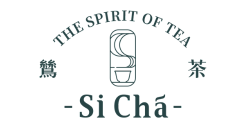Structure of a Wuyi Tea Factory
In the Wuyi Mountains, due to the complex terrain, tea gardens are scattered across various rocky areas, leading to relatively low yields of fresh leaves and difficulties in transportation. As a result, tea factories must be established close to where the leaves are picked, and are typically small in scale. A larger factory may produce just over 2,000 jin (about 1,000 kg) of finished tea per spring season, while smaller ones may only process 200 to 300 jin.
Nevertheless, the internal layout of these factories is usually well considered. Regardless of size, all tea factories are equipped with essential functional areas such as fermentation rooms, roasting rooms, drying rooms, pan-firing rooms, and rolling spaces. The small scale and limited production capacity of these factories contribute to the relatively high production cost of Wuyi rock tea.
While factory construction is constrained by the mountainous geography and therefore lacks standardization, their internal structures are largely similar despite some differences in external form. Taking a factory that produces about 1,000 jin of finished tea as an example, the typical building components include:
1. One or two sun-withering racks
2. One fermentation room
3. One drying room
4. One pan-firing room (which also contains the rolling area)
5. One roasting room
6. One tea-sorting shed
7. One charcoal storage room
8. One kitchen
9. Three or four temporary dormitories for male and female workers
10. One room for the factory head (“baotou”)
11. One tea storage room
12. One or two guest rooms
In factories producing over 1,500 jin of tea, there are often both large and small processing areas, especially when more premium or rare tea cultivars (such as dancong or mingcong) are involved. This setup is commonly referred to as “large and small roasting houses” (大小焙). Ordinary tea is processed in the larger area, while specialty teas are handled in the smaller facility. Labor is divided into two teams, though the factory layout for both is essentially the same.This description is based on the factory layout at Bishi Rock in Wuyi, which serves as a representative example.

Layout of Bishi Rock Tea Factory
